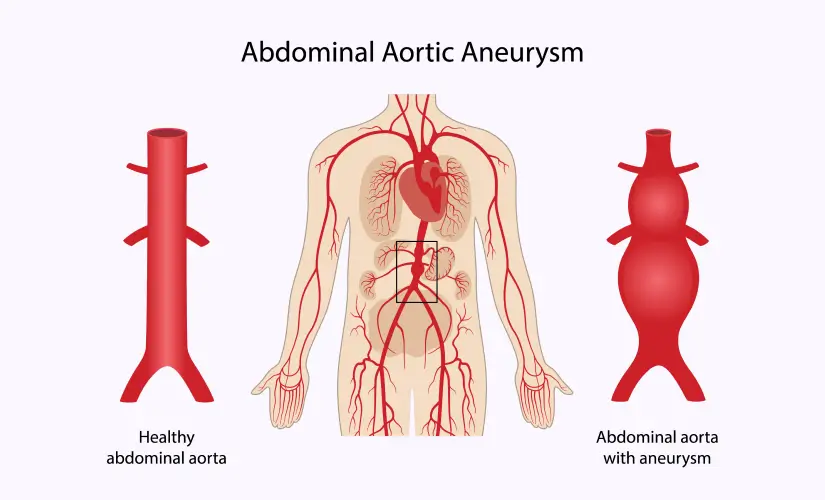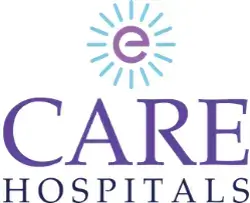-
Doctors
-
Specialities & Treatments
Centre of Excellence
Specialties
Treatments and Procedures
Hospitals & Directions HyderabadCARE Hospitals, Banjara Hills CARE Outpatient Centre, Banjara Hills CARE Hospitals, HITEC City CARE Hospitals, Nampally Gurunanak CARE Hospitals, Musheerabad CARE Hospitals Outpatient Centre, HITEC City CARE Hospitals, Malakpet
HyderabadCARE Hospitals, Banjara Hills CARE Outpatient Centre, Banjara Hills CARE Hospitals, HITEC City CARE Hospitals, Nampally Gurunanak CARE Hospitals, Musheerabad CARE Hospitals Outpatient Centre, HITEC City CARE Hospitals, Malakpet Raipur
Raipur
 Bhubaneswar
Bhubaneswar Visakhapatnam
Visakhapatnam
 Nagpur
Nagpur
 Indore
Indore
 Chh. Sambhajinagar
Chh. SambhajinagarClinics & Medical Centers
Book an AppointmentContact Us
Online Lab Reports
Book an Appointment
Consult Super-Specialist Doctors at CARE Hospitals

Aortic Aneurysm Surgery Cost
Aortic Aneurysm Surgery Cost
Aortic aneurysm affects approximately 5-10 people in every 100,000 individuals worldwide, making it a significant health concern that requires timely medical intervention. When left untreated, this condition can lead to life-threatening complications. Aortic aneurysm surgery costs vary significantly across different hospitals and regions in India. This comprehensive guide explains everything patients need to know about abdominal aortic aneurysm surgery costs in India. We will explain the factors affecting surgery expenses, procedure requirements, recovery time, and important considerations before choosing this treatment option.

What is Aortic Aneurysm?
The aorta, the body's largest blood vessel, carries oxygen-rich blood from our heart to other body parts. An abdominal aortic aneurysm (AAA) occurs when a section of this vital artery develops a weakness, causing it to bulge or balloon outward.
This condition becomes particularly dangerous as the bulge grows larger and may eventually burst or tear.
There are several types of aortic aneurysms based on their location:
- Thoracic aneurysms - occurring in the chest area
- Abdominal aneurysms - developing in the belly area
- Thoracoabdominal aneurysms - affecting both chest and abdomen regions
The condition is more common in men than women, with global data showing that men are four times more likely to develop an abdominal aortic aneurysm. What makes this condition particularly concerning is its silent nature - most people don't experience symptoms until the aneurysm ruptures or tears.
When an aortic aneurysm ruptures, it becomes a life-threatening emergency. Statistics show that up to 81% of people experiencing an abdominal aortic aneurysm rupture do not survive and may carry an overall mortality rate of 80–90%. This high mortality rate emphasises the importance of early detection and proper medical intervention through surgical procedures when necessary.
The size of the aneurysm is a major factor in determining the necessity for surgery. Doctors typically recommend surgery for aortic aneurysm when an ascending aortic aneurysm reaches 5.5 centimetres in size. However, this threshold may be lower for patients with certain genetic conditions or other risk factors.
What is the Cost of Aortic Aneurysm Procedure in India?
Surgery costs for aortic aneurysms vary significantly across different healthcare facilities in India. Patients seeking this life-saving procedure should understand that the total price includes the surgery and several related medical expenses.
The overall cost of aortic aneurysm surgery typically includes:
- Pre-surgical consultations and diagnostic tests
- Operating room charges and surgical team fees
- Post-operative care and monitoring
- Hospital stay duration (typically 7-10 days)
- Medication costs during hospitalisation
- Follow-up visits and rehabilitation
| City | Cost Range (in INR) |
| Aortic Aneurysm Cost in Hyderabad | Rs. 360000 /- |
| Aortic Aneurysm Cost in Raipur | Rs. 270000 /- |
| Aortic Aneurysm Cost in Bhubaneswar | Rs. 340000 /- |
| Aortic Aneurysm Cost in Visakhapatnam | Rs. 320000 /- |
| Aortic Aneurysm Cost in Nagpur | Rs. 300000 /- |
| Aortic Aneurysm Cost in Indore | Rs. 270000 /- |
| Aortic Aneurysm Cost in Aurangabad | Rs. 300000 /- |
| Aortic Aneurysm Cost in India | Rs. 250000 /- to Rs. 400000 /- |
Factors Influencing the Cost of Aortic Aneurysm Surgery
Several crucial factors determine the final cost of aortic aneurysm surgery, with the complexity of the procedure playing a major factor in the overall expenses.
- The Type of Surgery Required: The timing and nature of the surgery significantly impact the total cost. Research shows that emergency procedures for ruptured aneurysms are substantially more expensive than planned surgeries.
- Complexity and Complications: The presence of complications can dramatically increase the cost of treatment. When patients require system support, the expenses can multiply significantly.
- Hospital Stay Duration: The length of stay in the hospital significantly influences the final cost. Patients requiring intensive care unit (ICU) stays and additional system support face higher expenses.
- Mortality Risk Considerations: The mortality rate associated with the procedure type also affects the overall cost structure. Research shows that while ruptured AAA repairs have an 18% mortality rate, elective repairs have a significantly lower rate of 1.6%. This difference in risk levels influences the resources required and, consequently, the cost of care.
Why is Aortic Aneurysm Surgery Required?
Surgical intervention becomes essential when an aortic aneurysm poses a big risk to a patient's life. Doctors carefully evaluate each case to determine when surgery is necessary, as the timing of the procedure can make a crucial difference in patient outcomes.
The size of the aneurysm serves as the primary indicator for surgical intervention. Different patient groups have specific size thresholds that trigger the need for surgery:
- Standard patients require surgery when the ascending aortic aneurysm reaches 5.5 centimetres
- Patients with bicuspid aortic valve need intervention at 4.5 centimetres
- Those with genetic conditions like Marfan syndrome should undergo surgery at 5 centimetres
The urgency of surgery depends on whether the aneurysm has already ruptured or is at risk of rupturing. The survival rate is remarkably high at 95% to 98% for patients who undergo planned surgery before a rupture occurs. However, when surgery is performed after a rupture, the survival rate drops significantly from 50% to 70%.
Emergency Surgery Scenarios: Patients experiencing a ruptured or dissected aortic aneurysm need immediate emergency surgery. The following symptoms indicate that the patient needs urgent medical attention:
- Sudden, severe pain in the belly, back, or chest
- Clammy, sweaty skin
- Dizziness or fainting
- Fast heartbeat
- Shortness of breath
- Nausea and vomiting
What are the Most Common Risks Associated with Aortic Aneurysm Procedure?
While surgical techniques have improved significantly, complications can still occur during or after the operation.
Major Complications: The most significant risks associated with aortic aneurysm surgery include:
- Bleeding and blood loss during or after surgery
- Blood clots can affect organs like the bowels, kidneys, and legs
- Heart problems, including heart attacks and irregular rhythms
- Kidney damage or failure
- Spinal cord injury that might cause paralysis
- Infection of the surgical site or graft
- Stroke
- Decreased blood flow to vital organs
Conclusion
Aortic aneurysm surgery stands as a critical medical procedure that saves countless lives each year. Medical advances have made the surgery safer and more effective, though costs remain a significant consideration for many patients.
Patients should remember a few key points when planning for this procedure. First, early detection and planned surgery offer the best survival rates, reaching up to 98% compared to emergency procedures. Second, hospital choice significantly affects both costs and care quality, making thorough research essential.
The success of aortic aneurysm surgery depends largely on timing and proper medical evaluation. Regular monitoring helps doctors identify the right moment for surgical intervention while understanding the associated risks and costs, which allows patients to make informed decisions about their treatment.
Disclaimer
The cost details and estimates provided on this website are for informational purposes only and are based on average scenarios. They do not constitute a fixed quote or a guarantee of final charges.
CARE Hospitals does not represent or endorse the certainty of these cost figures. Your actual charges will vary according to the treatment type, chosen facilities or services, hospital location, patient’s health, insurance coverage, and medical necessities determined by your consulting doctor. Your use of this website content implies you acknowledge and accept this variability and that any reliance on the estimated costs is at your own risk. For the most current and personalized cost information, please contact us directly or give us a call.
FAQs
1. Is aortic aneurysm a high-risk surgery?
Aortic aneurysm surgery carries significant risks, but planned procedures show excellent outcomes with survival rates of 95% to 98%. However, emergency surgeries for ruptured aneurysms have lower survival rates of 50% to 70%. The main risks include:
- Blood clots affecting vital organs
- Kidney damage or failure
- Infection at the surgical site
- Potential spinal cord injury
2. How long does it take to recover from an aortic aneurysm?
Recovery time may vary based on the surgical approach. Most patients spend 5-10 days in the hospital. Full recovery typically takes 4-6 weeks, though some patients may need 2-3 months to return to normal activities.
3. Is aortic aneurysm a major surgery?
Yes, aortic aneurysm repair is considered major surgery requiring general anaesthesia. The procedure involves replacing the compromised section of the aorta with a synthetic graft. Most patients need intensive care unit monitoring for the first few days after surgery.
4. How painful is aortic aneurysm surgery?
Pain levels vary among patients. Studies show that patients may feel some pain and discomfort around the incision wound. Pain typically decreases significantly by the second day. Patients receive appropriate pain management, including epidural analgesia when necessary. Minimally invasive options like endovascular repair usually result in less post-operative pain and faster recovery than open surgery.
5. How long does abdominal aortic aneurysm surgery take?
The surgery typically takes 2-4 hours, though complex cases may require more time. Open surgical procedures usually take longer than endovascular repairs. The duration depends on factors like:
- Type of surgical approach
- Complexity of the aneurysm
- Additional procedures needed
- The patient's overall health condition
Still Have a Question?



